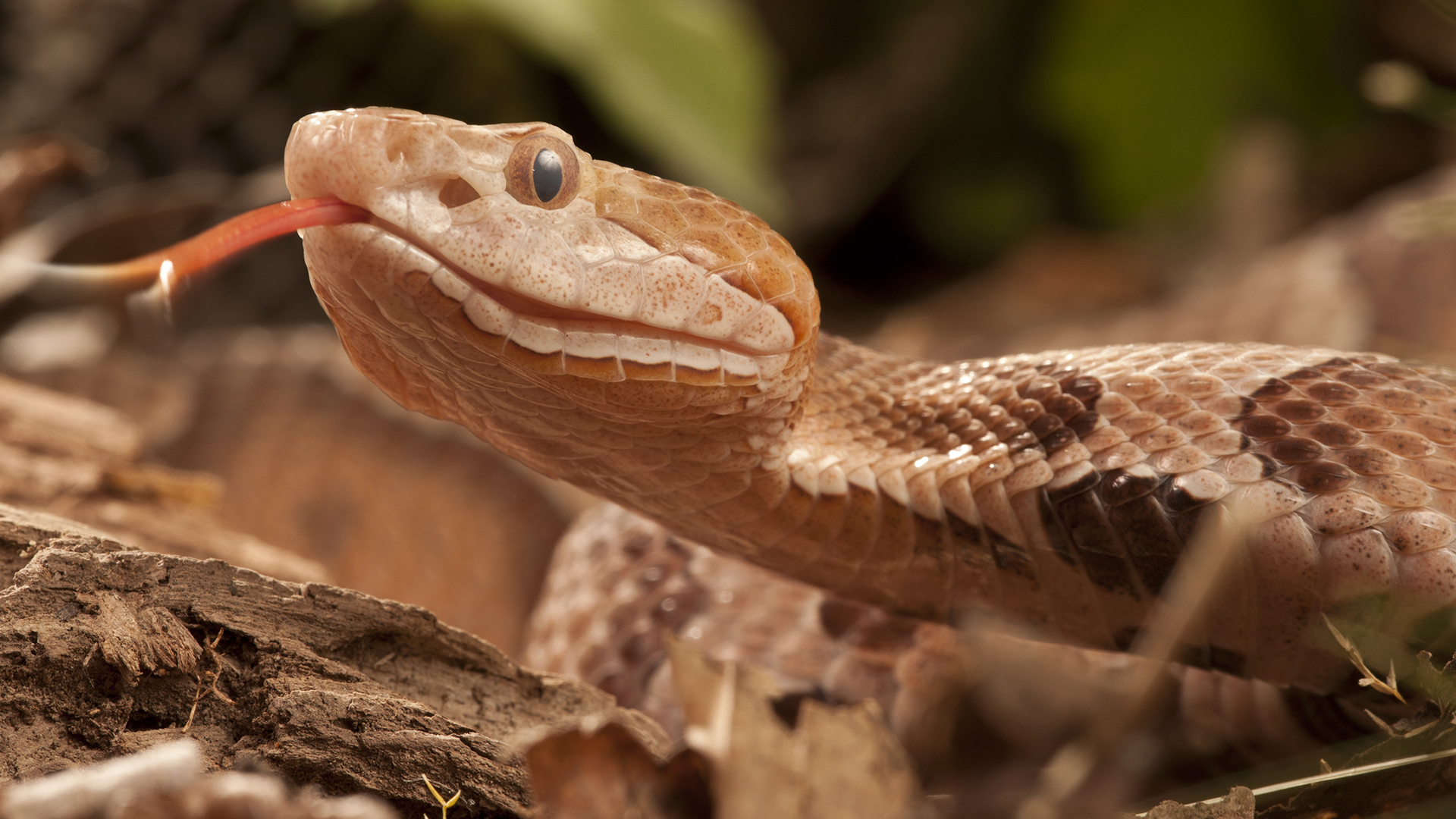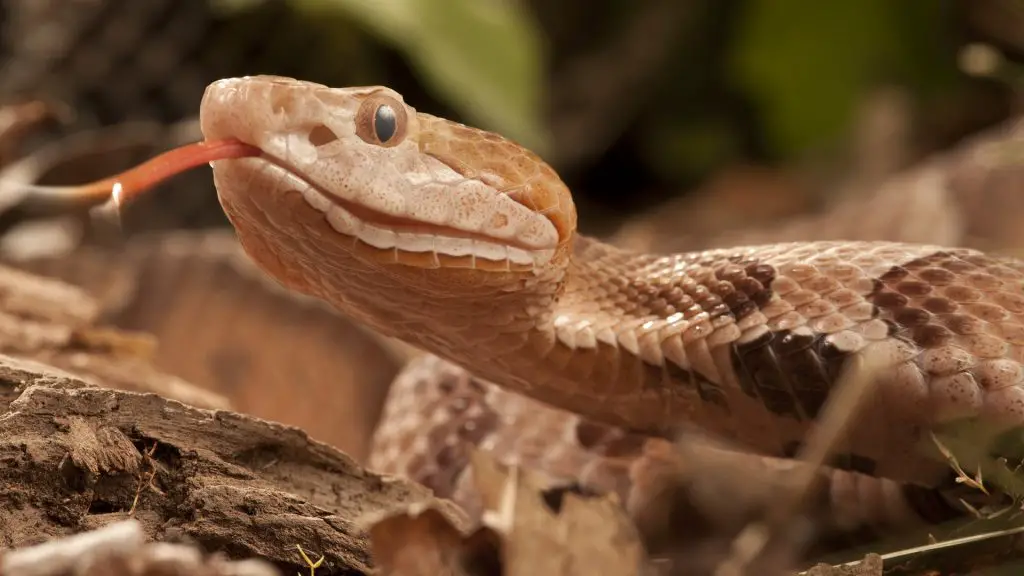Copperheads and rattlesnakes are two venomous snakes that are commonly found in North America. Due to their similar appearance, many people often confuse the two species. However, there are a few key differences between the two that can help you identify them correctly.
If you’re planning a hike or just want to learn more about these fascinating creatures, it’s essential to know the differences between a copperhead and a rattlesnake. In this article, we’ll explore the physical characteristics, habits, and habitats of these two venomous snakes, so you can stay safe and informed on your next outdoor adventure.
No, a Copperhead is not a Rattlesnake. Although both are venomous snakes found in North America, they belong to different genera. Copperheads belong to the Agkistrodon genus while Rattlesnakes are of the Crotalus genus. Copperheads have a distinctive copper-colored head, hence the name, while Rattlesnakes have a rattle at the end of their tail.

Is a Copperhead a Rattlesnake?
Copperhead and rattlesnake are two of the most commonly known venomous snakes in North America. Many people tend to confuse the two snakes, and it is not uncommon to hear one being referred to as the other. However, while they share some similarities, there are distinct differences between the two species. In this article, we will explore the differences between copperheads and rattlesnakes, their habitats, behaviors, and venom, to help you understand the two species better.
Appearance and Identification
Copperheads and rattlesnakes share some similarities in appearance. They are both pit vipers, and they have triangular-shaped heads and vertical pupils. However, there are some differences in their physical characteristics that can help you differentiate between the two.
Copperheads have a distinctive hourglass-shaped pattern on their bodies with a reddish-brown coloration. The pattern is often wider in the middle of their bodies and tapers towards the tail. They also have a copper-colored head, which is why they are called copperheads. On the other hand, rattlesnakes have a distinct rattle on the end of their tails, which is used as a warning signal to potential predators. They also have a diamond-shaped pattern on their bodies with a grayish-brown coloration.
To identify a copperhead, look for the hourglass pattern on its body and the copper-colored head. To identify a rattlesnake, look for the rattle on its tail and the diamond-shaped pattern on its body.
Habitat and Behavior
Copperheads and rattlesnakes have different habitats and behaviors. Copperheads are found in the eastern and central regions of North America, from southern New England to Texas. They prefer to live in wooded or rocky areas near water sources, such as streams or ponds. Copperheads are mostly active during the day and are known to bask in the sun to regulate their body temperature.
Rattlesnakes, on the other hand, are found throughout North and South America. They prefer dry, rocky areas such as deserts and prairies. Rattlesnakes are mostly active at night and are known to hibernate during the colder months. They use their rattle as a warning signal to potential predators, and they are known to strike when threatened.
Venom and Bite
Both copperheads and rattlesnakes are venomous, but their venom has different effects on humans. Copperheads have a mild venom that causes pain, swelling, and redness at the site of the bite. In most cases, the symptoms are not life-threatening, and medical attention is only required if the symptoms persist or worsen.
Rattlesnakes, on the other hand, have a more potent venom that can cause severe symptoms, including tissue damage, organ failure, and even death. The severity of the symptoms depends on the amount of venom injected and the location of the bite. In case of a rattlesnake bite, it is essential to seek immediate medical attention.
Benefits and Risks
While copperheads and rattlesnakes are both venomous, they also play an important role in their ecosystems. They are natural predators of rodents and other small animals, and they help regulate their populations. However, the risks associated with their venomous bites cannot be ignored.
To avoid encounters with copperheads and rattlesnakes, it is essential to take precautions while hiking or spending time in their habitats. Wear long pants and boots, avoid walking in tall grass, and be aware of your surroundings. If you encounter a snake, give it plenty of space and do not attempt to handle or capture it.
Copperhead vs. Rattlesnake
In summary, while copperheads and rattlesnakes share some similarities, there are distinct differences between the two species. Copperheads have a distinctive hourglass-shaped pattern on their bodies with a reddish-brown coloration and a copper-colored head. Rattlesnakes have a rattle on the end of their tails and a diamond-shaped pattern on their bodies with a grayish-brown coloration.
Copperheads prefer wooded or rocky areas near water sources, while rattlesnakes prefer dry, rocky areas such as deserts and prairies. Copperheads have a mild venom that causes pain and swelling, while rattlesnakes have a more potent venom that can cause severe symptoms, including death.
Both copperheads and rattlesnakes play an important role in their ecosystems as natural predators of rodents and other small animals. However, to avoid encounters with these venomous snakes, it is crucial to take precautions while hiking or spending time in their habitats.
Frequently Asked Questions
Here are some common questions people have about copperheads and rattlesnakes.
What is a Copperhead?
A copperhead is a venomous snake that is found throughout North America. They are known for their distinctive copper-colored heads and hourglass-shaped markings on their bodies. Copperheads are pit vipers, which means they have heat-sensing organs that help them locate prey. They are not usually aggressive towards humans, but they will bite if they feel threatened.
While copperheads are venomous, their bites are rarely fatal to humans. However, it is important to seek medical attention immediately if you are bitten by a copperhead.
What is a Rattlesnake?
Rattlesnakes are also venomous snakes that are found throughout North America. They are named for the rattle on the end of their tails, which they use to warn predators or humans of their presence. Rattlesnakes are also pit vipers and have heat-sensing organs to locate prey.
Like copperheads, rattlesnakes are not usually aggressive towards humans, but they will bite if they feel threatened. Rattlesnake bites can be very dangerous and even fatal if not treated promptly.
How do Copperheads and Rattlesnakes differ?
While copperheads and rattlesnakes are both venomous snakes, there are some key differences between the two. The most obvious difference is the rattle on the end of a rattlesnake’s tail. Copperheads do not have rattles. Additionally, copperheads have distinctive copper-colored heads and hourglass-shaped markings on their bodies, while rattlesnakes have diamond-shaped markings.
The venom of copperheads and rattlesnakes is also slightly different, with rattlesnake venom generally being more potent. However, both snakes are capable of delivering a painful and potentially dangerous bite.
Can you mistake a Copperhead for a Rattlesnake?
It is possible to mistake a copperhead for a rattlesnake, especially if you are not familiar with the markings of each. However, there are some key differences that can help you tell the two apart. As mentioned earlier, copperheads have hourglass-shaped markings on their bodies, while rattlesnakes have diamond-shaped markings.
In addition, copperheads do not have a rattle on the end of their tails, while rattlesnakes do. If you encounter a snake and are not sure whether it is a copperhead or a rattlesnake, it is best to keep your distance and seek the advice of a professional.
What should you do if you encounter a Copperhead or Rattlesnake?
If you encounter a copperhead or rattlesnake in the wild, it is important to stay calm and keep your distance. Do not try to handle the snake or provoke it in any way. If you are hiking or camping, make noise as you go to alert snakes to your presence.
If you or someone else is bitten by a copperhead or rattlesnake, seek medical attention immediately. Do not try to suck out the venom or use a tourniquet, as these methods can actually make the situation worse.
How Deadly is the Copperhead?!
In conclusion, it is clear that a copperhead and a rattlesnake are two distinct species of snakes. While they may share some physical similarities, such as their venomous bites and triangular-shaped heads, there are also many differences between them, such as their patterns and habitats. Therefore, it is important to educate oneself on the characteristics of each snake in order to properly identify and avoid any potential danger.
Although both copperheads and rattlesnakes can be dangerous to humans, it is important to remember that they are also valuable members of their ecosystems. These snakes play important roles in controlling rodent populations and maintaining the balance of their habitats. It is important to respect these creatures and to take precautions when encountering them in the wild.
Ultimately, while a copperhead may resemble a rattlesnake in some ways, it is important to recognize and appreciate the unique characteristics of each species. By understanding and respecting these snakes, we can coexist with them in a safe and harmonious manner.

